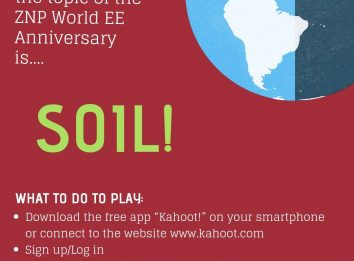

We step on it every day, running, walking, jumping, up and down, left and right, and when we fall down… it’s there to sustain us! It’s the soil. Have you ever thought about how important the soil is in all of the human activities? We grow plants, breed animals, extract minerals and other raw materials, water too, build up houses, roads and factories on it, and that isn’t all. There’s much more that the soil is doing for us and we can’t see directly. But what is the soil? We can say that the soil is the living, breathing skin of our planet and it is affected by – and is the result of – the many and varied interactions that occur between the atmosphere, as governed by climate and weather patterns, the biosphere, that is the local vegetation and animal activities including those of man, and the geosphere, the rocks and sediments that form the upper few metres of the Earth’s solid crust. It is the vital natural habitat that regulates our environment and carries out a number of key environmental tasks that are essential to our wellbeing. Not only enabling us to grow our food, natural fibre and timber, as we said and can easily imagine. First of all, the soil is the environmental engine room where dead plant and animal tissues are “re-cycled” to provide nutrients for the growth of new life. The incredible variety of organisms that inhabit the soil is only just beginning to be understood and here lies! It is also the natural filter and reclamation centre where potential pollutants are neutralised and excess water is re-distributed to surface or ground water. But it depends on different parameters, such as texture (composition and size of particles), structure (the arrangement of solid parts and of the pore space located between them) and vegetative cover of course. For example, a well structured loamy soil under grass or woodland acts like a sponge and can absorb as much as 40% of its volume as water! While, in bare soil or intensive cropping lands, with regular use of heavy machinery that can compact the soil and close the pore space, the surface runoff is higher and the water storage capacity lowers, and this can significantly increase the likelihood of ‘flash’ flooding from intensive rainfall, decrease the replenishment of underground water resources, and, in some cases, magnify the amount of rain that is rapidly moved to the surface water network, resulting in a quicker rise of river levels and possibly a higher likelihood of river flooding. And the same happens in urban asphalted soils, industrial or mining sites, just to mention some.
These are just some examples of what happens to natural soils when used for intensive human activities. It sounds even worse if we think that not every land is suitable for our purposes (we have to take into account that a large percentage of lands hasn’t optimal soil conditions to be exploited by man, for instance too poor in nutrients or sloping or periodically flooded or too dry or in other adverse climate/environmental conditions) and soil is actually non-renewable natural resource. Once that the land use change and a healthy fertile soil has been transformed in something different, it isn’t possible – or it’s pretty hard and expensive – to turn it back to its origin. Erosion, contamination, compaction, salinisation are just some of the processes threatening our soils in modern industrialised societies. The phenomenon is called “land consumption”, also known as “land degradation” when the change is irreversible, and it’s a real problem we have to care about.
Fortunately, a new environmental awareness is growing and new methods and techniques are raising all around the world, in order to exploit this precious resource, without compromising it. It’s not impossible!
Try to answer our questions and see how much you know about Soil!
How play:
1. Download the free app “Kahoot!” on your smartphone or connect the the website www.kahoot.com
2. Sign up/Log in
3. Search for “ZNP World EE Day 2018” or connect with the link https://play.kahoot.it/#/k/2ff4089c-c864-466b-a8b3-1675df95143c
4. Play!
Elisa, EVS volunteer from Erasmus+
(Soil Atlas of Europe, European Soil Bureau Network European Commission, 2005)
Zemaitija National Park Directorate
Didžioji str. 10, Plateliai, LT-90420, Plungės dstr., Lithuania
Company code: 191440964
VAT code: LT914409610
The founder is the State Service of Protected Areas under the Ministry of Environment.
Website part-financed by the European Union 2014-2020. Interreg V-A South Baltic Cross Border Cooperation Program.
